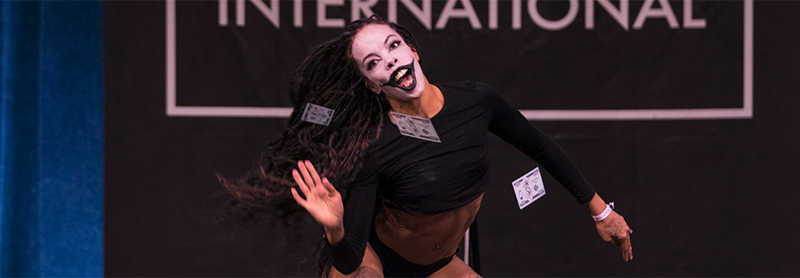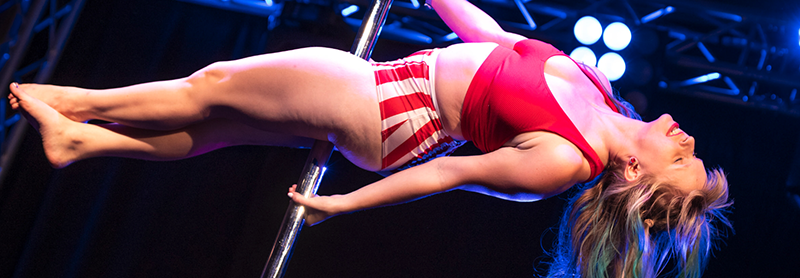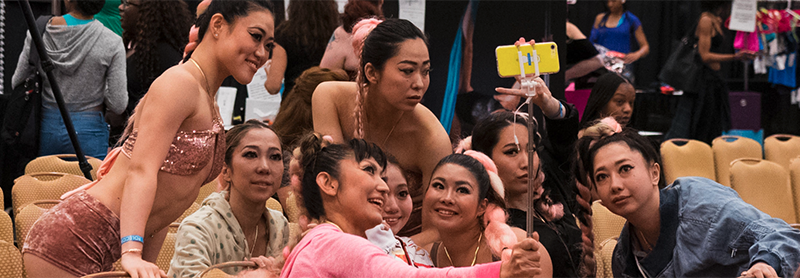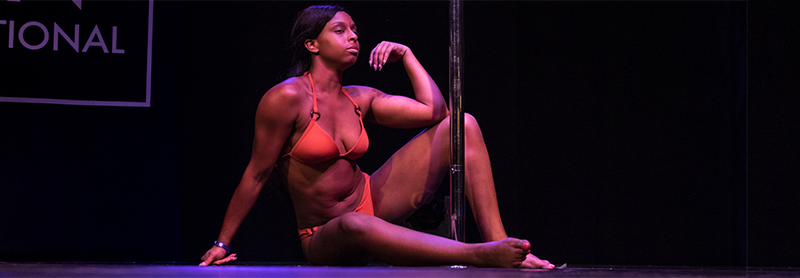This post is based on the webinar “Out of the Dark, Tax Planning for the…

How to Become a Pole Dance Photographer
Pole dance photography represents a unique intersection of action, art, and technical precision. For photographers looking to specialize in this growing niche, understanding the technical requirements is essential for capturing stunning, dynamic images for your pole business.
This post contains many technical details from PoleCon’s official photographer, Lakin Jones who shared these tips during a webinar (IPIA members can view the webinar recording here).
A background in photography in general is recommended before becoming a pole-specific photographer.
Tips for Any Aspiring Photographer
Make sure you have a contract (IPIA members can download a sample template here) and appropriate insurance.
Insurance may potentially include:
- Equipment insurance for your gear (if it is stolen, lost, or breaks).
- Commercial Liability insurance for venues or studios.
- Liability coverage for working with performers.
Pole photography is a business! Treat it as such.
Pole Dance Photography
Pole photography is a unique subset of photography with challenging demands for the photographer.
Even within pole photography, the genre can be further subdivided into studio setting or event photography. There may be product photography too if you make and sell apparel, grip, or other products.
Each type of photography will have its own lighting needs and technical specifications.
Generally, a photographer may specialize in one type of photography rather than multiple.
For example, a great pole event photographer may not be the most appropriate studio photographer. If your goal is to become a pole photographer, think about what you like to do and may already have some experience with.
Understanding the Technical Trifecta
Successful pole photography hinges on mastering three critical camera settings:
- Shutter Speed: Aim for at least 1/500th of a second to freeze motion and capture crisp, blur-free images. Pole dance involves quick transitions and movements that require high shutter speeds to document properly. This is true in studio or posed shoots as well as during events.
- ISO Settings: ISO measures how sensitive the camera’s sensor is to light. Begin with the lowest possible ISO setting to minimize visual noise in your images. However, be prepared to increase this setting when shooting in typical pole studio environments, which may feature darker “mood” lighting.
- Aperture: While a lower aperture (wider opening) provides better quality and light intake, you’ll need to balance this against your depth of field requirements. Finding this balance takes practice but dramatically impacts image quality.
The most challenging aspect of pole photography is reconciling these three elements when shooting in dimly lit environments. Pole performances can feature atmospheric lighting that creates a striking mood but presents significant technical hurdles for capturing sharp action shots.
Whenever possible, work with lighting technicians and event producers during pole shows or competitions to ensure the best shoots possible.
Pole Photography Equipment Considerations
Photography equipment including the camera body, the lenses, lighting, and other accessories can be very expensive to purchase.
You don’t need to invest thousands immediately. Consider these approaches:
- Begin with a budget-friendly camera that offers high shutter speeds to understand the dynamics of pole movement.
- Rent professional equipment before committing to purchases.
- Gradually build your kit as you develop your style and client base.
Different lighting setups, modifiers, and exposures will be necessary depending on the venue and style of pole dance you’re photographing.
Practical Tips for Success
Understanding pole dance itself before becoming a pole dance photographer is invaluable. Learn to recognize:
- Where the “peak” moment occurs in various moves. While many people have a clear idea of what the shape they are showcasing *should* look like, communicate with any models to ensure you are getting that shape.
- How different shapes convey different emotions.
- When to capture static poses versus dynamic transitions – the movement in between the movements.
The combination of high shutter speeds and proper positioning helps document both the technical precision and emotional expression that make pole dance photography so compelling.
Also remember that quantity matters. Taking numerous photos increases your chances of capturing perfect moments. You will down select the photos in post-production so take as many as you can! And anticipation is key. Learn to predict pole moves and transitions and position yourself accordingly to capture the shape.
Remember that pole photography is ultimately a balancing act—not just technically with camera settings, but also artistically between capturing physical movement and emotional expression.



